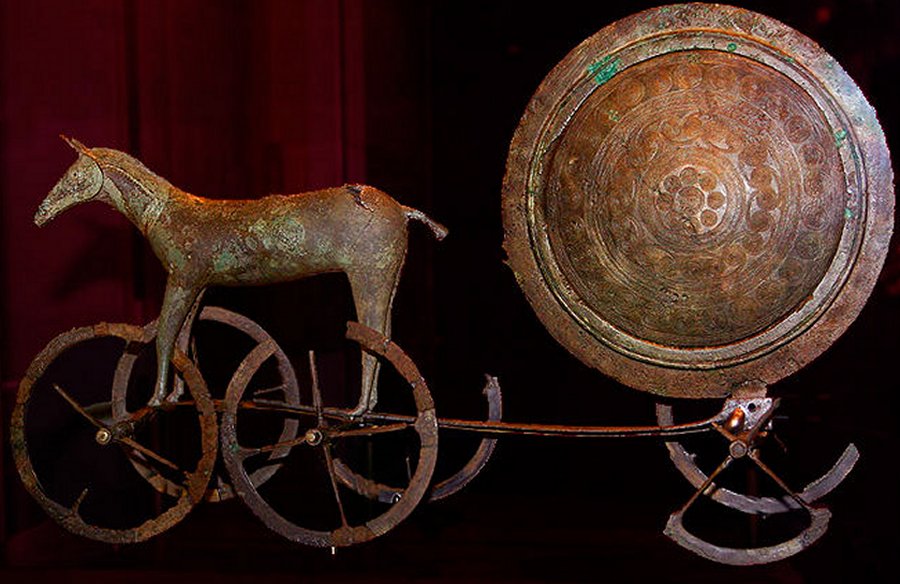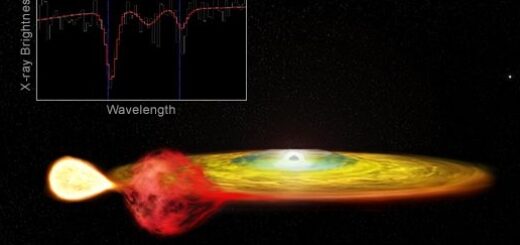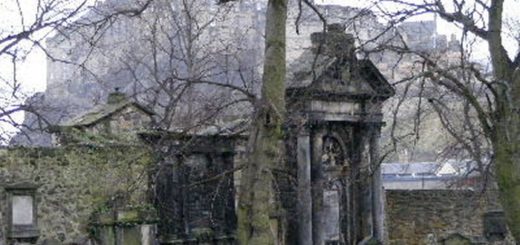Sun Chariot – Powerful Symbol Of Bronze Age Cosmology
– The Sun Chariot – now in the collection of the National Museum of Denmark in Copenhagen – was found in September 1902 in a peat bog on the Trundholm moor in northwestern Zealand (Sjælland) – most populated island in Denmark.

The Sun Chariot – a beautiful example of prehistoric Northern European sculpture was made in the Early Bronze Age around 1400 BC.
The artifact’s elegant spiral ornamentation that graces the golden sun disc reveals its Nordic origin.
The Sun Chariot consists of the solar disk, the axle, and four wheels with spokes and supports the idea that the sun was drawn on its eternal journey by a divine horse.
The bronze statue symbolizes the motion of the sun.
However, it is uncertain if the sun was imagined as being the chariot itself, or as riding in a chariot.
The existence of a model of a horse-drawn vehicle on spoked wheels in Northern Europe at such an early time is very unusual, as the earliest known actual chariots (as opposed to ox-drawn carts without spokes) in Europe are from the Iron Age, dating from c. the 6th century BC.
The disk has a diameter of ca. 25 cm, and is gilded on only one side, the right-hand one relative to the horse.
What was the original function of ancient bronze disks with ornamentations? Could they had been ancient calendars?
The Sun was the most powerful symbol of the Bronze Age cosmology in Denmark so the two sides of the disk are believed to be representations of the sun.
This has been interpreted as an indication of the belief that the Sun is drawn across the heavens from East to West during the day, showing its bright side – the gilded one. During the night, it returns from West to East, showing his “dark side” to the Earth.Looking at the disk we see decorations that are composed from several spirals, concentric circles and bands with zigzags.What do they all mean?



 Creators of mankind
Creators of mankind Description of “Tall white aliens”
Description of “Tall white aliens” Where they came from?
Where they came from? About hostile civilizations
About hostile civilizations The war for the Earth
The war for the Earth “Tall white aliens” about eternal life
“Tall white aliens” about eternal life Video: “Nordic aliens”
Video: “Nordic aliens” Aliens
Aliens Alien encounters
Alien encounters The aliens base
The aliens base UFO
UFO Technology UFO
Technology UFO Underground civilization
Underground civilization Ancient alien artifacts
Ancient alien artifacts Military and UFO
Military and UFO Mysteries and hypotheses
Mysteries and hypotheses Scientific facts
Scientific facts


















